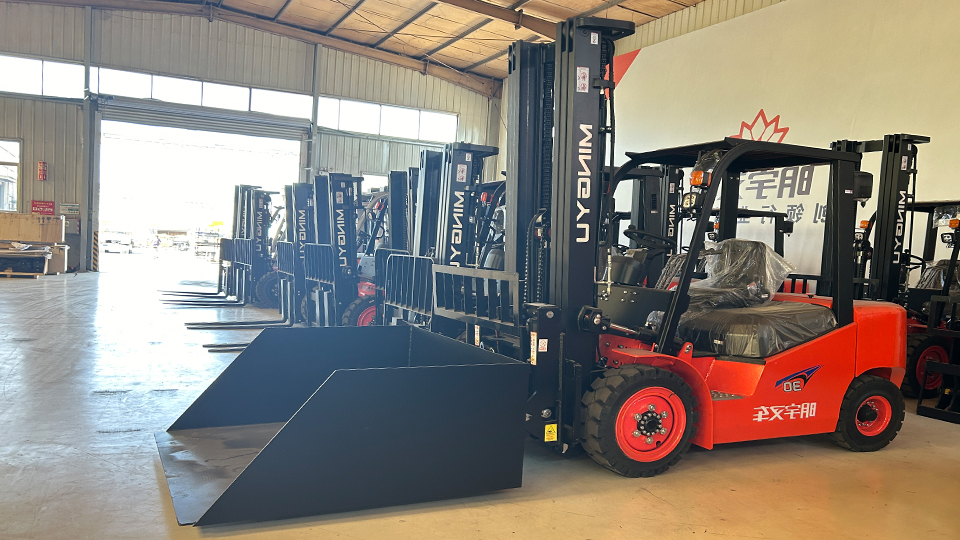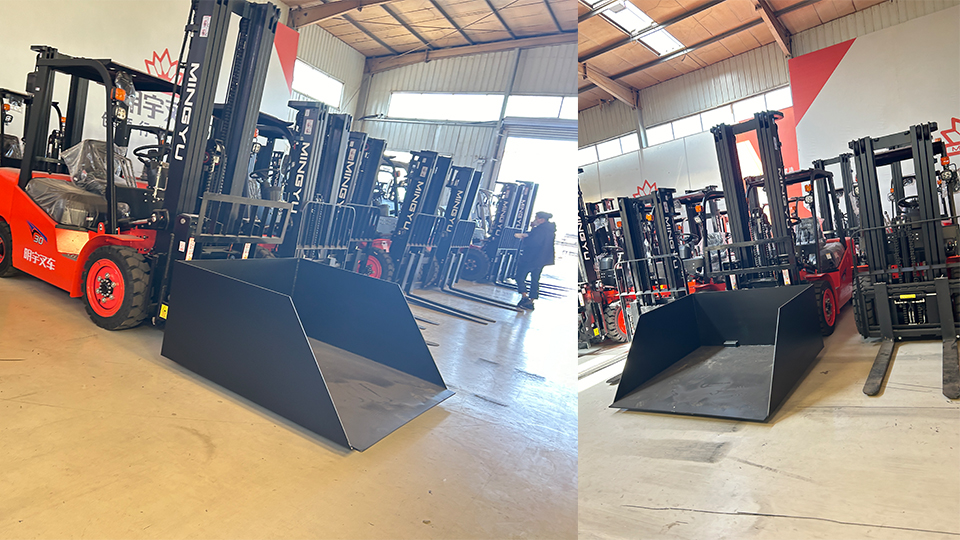
Reaching New Heights: Understanding the Maximum Lifting Height of a Forklift
The ubiquitous forklift, a workhorse of industries ranging from warehousing and logistics to construction and manufacturing, plays a critical role in material handling. Its ability to lift and transport heavy loads with relative ease has revolutionized countless operations. However, a fundamental question arises for anyone involved in these processes: what is the maximum lifting height of a forklift? The answer, as with many engineering specifications, is not a simple, singular value. Instead, it's a multifaceted characteristic influenced by a complex interplay of design, type, and specific application. Understanding these factors is crucial for ensuring operational safety, optimizing workflow efficiency, and selecting the right equipment for the task at hand.
This article will delve into the intricacies of forklift lifting height, exploring the various types of masts, the factors that determine their maximum reach, and the crucial safety considerations that must always be paramount when operating at height. We will also touch upon how technological advancements are pushing the boundaries of vertical reach in material handling.
The Core Component: The Mast
The heart of a forklift's lifting capability lies in its mast assembly. The mast is the vertical structure that provides the framework for raising and lowering the load. It consists of interlocking channels and hydraulic cylinders that work in concert to achieve vertical movement. The design and configuration of these channels and cylinders directly dictate the maximum lifting height.
There are several primary types of forklift masts, each offering distinct advantages and limitations in terms of lifting height:
Single-Stage Mast (Simplex): This is the simplest mast design, featuring a single pair of inner and outer channels. The lifting height achievable with a simplex mast is roughly equal to the height of the mast itself. When the forks are at their maximum height, the mast remains at its full extended length. This design is often found on smaller forklifts used for tasks where high stacking is not a primary requirement. Their compact nature provides good visibility for the operator. However, their maximum lift height is inherently limited.
Two-Stage Mast (Duplex): Duplex masts incorporate two sets of channels. The inner mast section lifts first, followed by the carriage and forks. This design allows for a higher lift height compared to a simplex mast while maintaining a relatively low collapsed height. This is particularly advantageous when operating in areas with overhead obstructions or when the forklift needs to pass through doorways. The maximum lift height of a duplex mast is typically significantly greater than its collapsed height.
Three-Stage Mast (Triplex): Triplex masts feature three sets of channels. The first inner mast section lifts, followed by the second inner mast section, and finally the carriage and forks. This configuration offers the greatest lift height for a given collapsed mast height. Triplex masts are commonly found on forklifts used in high-bay warehouses and distribution centers where maximizing vertical storage space is critical. The ability to reach considerable heights while still having a relatively low collapsed height makes them versatile for various applications.
Four-Stage Mast (Quad): While less common than single, duplex, and triplex masts, quad masts exist for applications requiring exceptionally high lift heights. They operate on the same principle as triplex masts, with an additional set of channels extending to achieve even greater vertical reach. These are typically found in specialized warehousing environments.

Key Specifications Defining Lifting Height
To accurately understand a forklift's lifting capability, it's essential to be familiar with the key specifications related to height:
Maximum Fork Height: This is the most commonly cited specification and refers to the vertical distance from the ground to the top of the forks when fully raised, with the mast in its fully extended position and the carriage at its highest point. This is the primary indicator of how high the forklift can lift a load.
Collapsed Mast Height: This refers to the vertical height of the mast when it is fully lowered. This dimension is crucial for determining if the forklift can safely pass under overhead obstructions such as doorways, mezzanines, or low-hanging pipes.
Free Lift: This is the distance the forks can be raised vertically before the inner mast channels begin to extend. A higher free lift is advantageous when working in areas with low ceilings or when loading and unloading trailers, as it allows the operator to lift the load without fully extending the mast. Duplex and triplex masts typically offer a significant amount of free lift.
Overall Extended Height: This refers to the total vertical height of the forklift when the mast is fully extended and the load backrest or any other overhead guard components are at their highest point. This is an important consideration for ensuring clearance from overhead structures.
Factors Influencing Maximum Lifting Height
Beyond the type of mast, several other factors influence the maximum lifting height achievable by a specific forklift model:
Lift Capacity: There is often an inverse relationship between a forklift's lift capacity and its maximum lifting height. As the mast extends and the load is raised higher, the stability of the forklift decreases. Therefore, forklifts designed for very high lifts may have a reduced load capacity at their maximum height compared to their capacity at lower heights. Manufacturers provide load capacity charts that clearly indicate the permissible load weight at various lift heights and load center distances.
Forklift Stability: Stability is paramount in forklift operation, especially at height. The design of the forklift's chassis, wheelbase, counterweight, and the mast itself all contribute to its stability. Higher lift heights necessitate careful engineering to maintain stability and prevent tipping.
Hydraulic System: The power and efficiency of the forklift's hydraulic system directly impact its lifting speed and the ability to smoothly and safely raise loads to the maximum height. More robust hydraulic systems are required for higher lift applications
Tire Type and Condition: The type and condition of the tires can affect the forklift's stability and overall operating height. Properly inflated tires of the correct type are essential for safe operation, particularly when lifting at maximum height.
Attachments: The use of attachments, such as side shifters, fork positioners, or specialized clamps, can sometimes slightly reduce the maximum lifting height or the effective reach due to their added weight and dimensions.
The Range of Maximum Lifting Heights
Given the variety of forklift types and configurations, the maximum lifting height can vary significantly. Generally, we can observe the following ranges:
Small Warehouse Forklifts (e.g., narrow aisle reach trucks, order pickers): These specialized trucks designed for high-density warehousing can often achieve impressive lifting heights, ranging from 20 to 45 feet (approximately 6 to 13.7 meters) or even higher in some specialized VNA (Very Narrow Aisle) applications.
Standard Counterbalance Forklifts (electric and internal combustion): These versatile forklifts typically offer maximum lifting heights ranging from 10 to 20 feet (approximately 3 to 6 meters) with duplex masts, and 15 to 30 feet (approximately 4.5 to 9 meters) or more with triplex masts.
Rough Terrain Forklifts: Designed for outdoor and uneven surfaces, rough terrain forklifts often prioritize stability and ruggedness over extreme lifting height. Their maximum lift heights typically range from 10 to 25 feet (approximately 3 to 7.6 meters).

Telescopic Handlers (Reach Trucks): While not strictly forklifts, telescopic handlers share the ability to lift materials to significant heights using a telescopic boom. Their maximum reach can extend considerably, often ranging from 20 to over 70 feet (approximately 6 to over 21 meters), depending on the model and application.
Safety First: Operating at Height
Operating a forklift at its maximum lifting height demands strict adherence to safety protocols. The potential for accidents increases significantly when loads are elevated. Key safety considerations include:
Load Capacity: Always ensure that the weight of the load does not exceed the forklift's rated capacity at the specific lift height and load center. Consult the forklift's load capacity chart.
Stability: Operate on level surfaces whenever possible. Avoid sudden starts, stops, and turns, especially with an elevated load. Be aware of the forklift's center of gravity and how it shifts with the load.
Mast Operation: Operate the mast smoothly and avoid jerky movements. Ensure the load is properly secured on the forks before lifting.
Overhead Obstructions: Be constantly aware of overhead obstructions such as lights, pipes, and ceilings, especially when raising and lowering the mast.
Operator Training: Only trained and certified personnel should operate forklifts, particularly when working at height. Thorough training covers safe operating procedures, load handling, and stability considerations.
Maintenance: Regular maintenance of the forklift, including the mast, hydraulic system, and tires, is crucial for safe operation.
Spotters: In certain situations, especially when visibility is limited or the lift is complex, using a spotter can significantly enhance safety.
The Future of Lifting Height
Technological advancements continue to push the boundaries of what's possible in material handling. Innovations in mast design, hydraulic systems, and stability control are leading to forklifts with even greater lifting heights and capacities. Automation and robotics are also playing an increasing role, with automated guided vehicles (AGVs) and autonomous forklifts capable of operating at significant heights in controlled warehouse environments. Furthermore, sophisticated sensor systems and operator assistance technologies are being developed to enhance safety and precision when working at elevated heights.
Conclusion
The maximum lifting height of a forklift is not a fixed number but rather a dynamic characteristic determined by a confluence of factors, primarily the type of mast, the forklift's overall design, and its intended application. Understanding the different mast configurations, key height specifications, and the factors influencing lift capability is essential for selecting the appropriate equipment and ensuring safe and efficient material handling operations. As technology continues to evolve, we can expect further advancements in forklift design, leading to even greater vertical reach and enhanced capabilities in the ever-demanding world of material handling. However, regardless of the technological prowess, safety must always remain the paramount consideration when reaching for new heights.
Name: selena
Mobile:+86-13176910558
Tel:+86-0535-2090977
Whatsapp:8613181602336
Email:vip@mingyuforklift.com
Add:Xiaqiu Town, Laizhou, Yantai City, Shandong Province, China